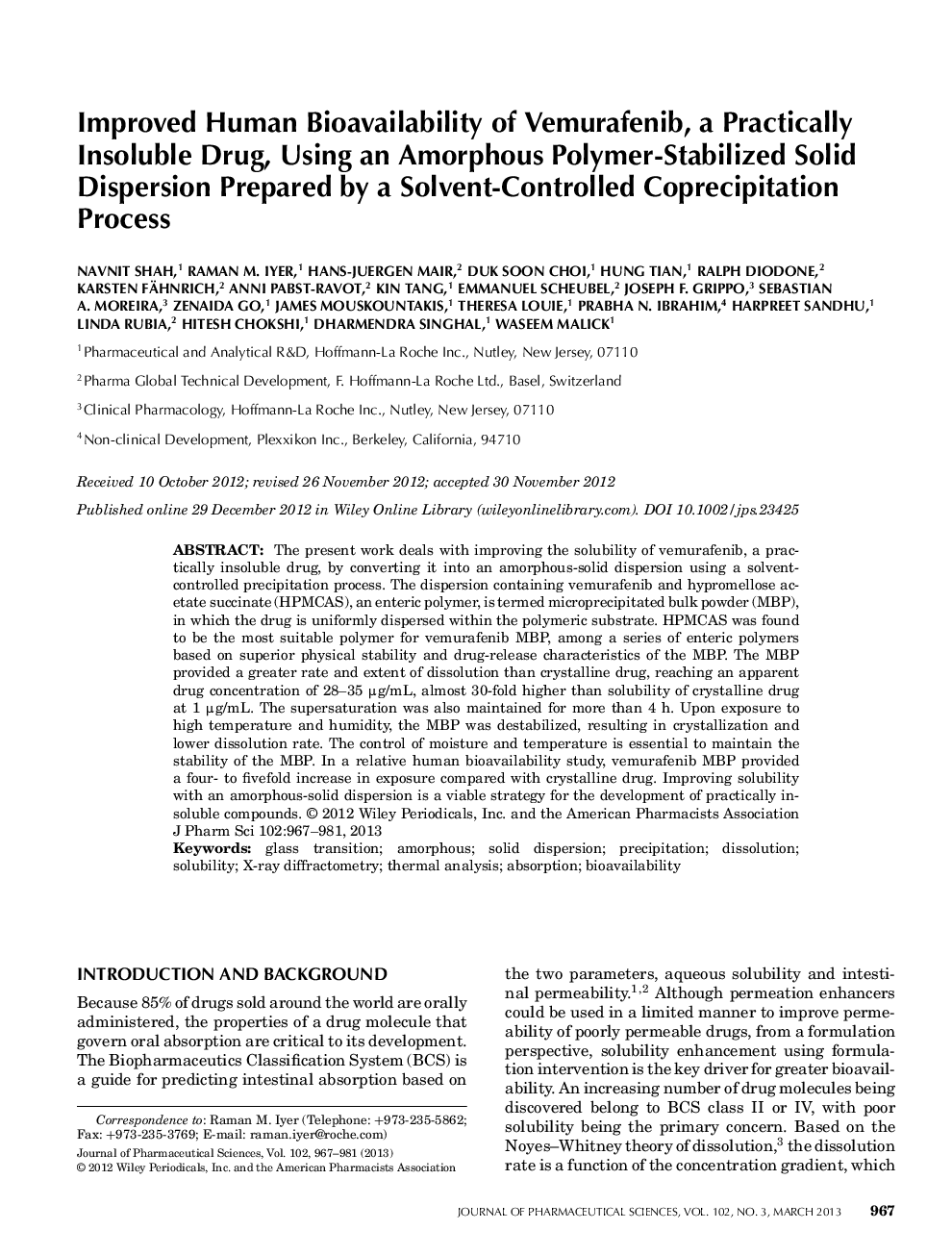| Article ID | Journal | Published Year | Pages | File Type |
|---|---|---|---|---|
| 10162742 | Journal of Pharmaceutical Sciences | 2013 | 15 Pages |
Abstract
The present work deals with improving the solubility of vemurafenib, a practically insoluble drug, by converting it into an amorphous-solid dispersion using a solventcontrolled precipitation process. The dispersion containing vemurafenib and hypromellose acetate succinate (HPMCAS), an enteric polymer, is termed microprecipitated bulk powder (MBP), in which the drug is uniformly dispersed within the polymeric substrate. HPMCAS was found to be the most suitable polymer for vemurafenib MBP, among a series of enteric polymers based on superior physical stability and drug-release characteristics of the MBP. The MBP provided a greater rate and extent of dissolution than crystalline drug, reaching an apparent drug concentration of 28-35 μg/mL, almost 30-fold higher than solubility of crystalline drug at 1 μg/mL. The supersaturation was also maintained for more than 4 h. Upon exposure to high temperature and humidity, the MBP was destabilized, resulting in crystallization and lower dissolution rate. The control of moisture and temperature is essential to maintain the stability of the MBP. In a relative human bioavailability study, vemurafenib MBP provided a four- to fivefold increase in exposure compared with crystalline drug. Improving solubility with an amorphous-solid dispersion is a viable strategy for the development of practically insoluble compounds. © 2012 Wiley Periodicals, Inc. and the American Pharmacists Association J Pharm Sci 102:967-981, 2013
Keywords
Related Topics
Health Sciences
Pharmacology, Toxicology and Pharmaceutical Science
Drug Discovery
Authors
Navnit Shah, Raman M. Iyer, Hans-Juergen Mair, Duksoon Choi, Hung Tian, Ralph Diodone, Karsten Fahnrich, Anni Pabst-Ravot, Kin Tang, Emmanuel Scheubel, Joseph F. Grippo, Sebastian A. Moreira, Zenaida Go, James Mouskountakis, Theresa Louie,
